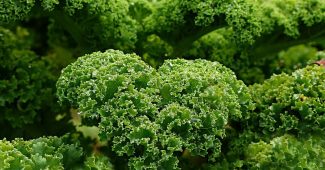As humans, we tend to enjoy consuming food that tastes good. However, it may often surprise us that many of the fruits and vegetables we love contain small amounts of poisonous substances. Overindulging in these foods can have severe consequences on our bodies, potentially resulting in death. Here are top 10 toxic foods that we like to eat.
10Pufferfish
Pufferfish is the second most poisonous vertebrate in the world. It contains highly poisonous tetrodotoxin in its internal organs and skin. However, pufferfish is still popular in China, Japan, and Korea. But only specially trained chefs can cook and serve the Japanese dish ‘fugu’ made from pufferfish. Qualifying for the cooking test dealing with pufferfish is difficult, so more than 70% of trainees fail and die.
Pufferfish contains toxic elements that are 100 times more potent than cyanide, and just one pufferfish can be fatal for up to 30 people. If consumed without taking precautions, pufferfish can result in decreased blood pressure, vomiting, difficulty breathing, and even death. Sometimes, the pufferfish toxin can cause paralysis or induce a coma.
9Elderberry
However, it is essential to note that all parts of the Elderberry, except for the flowers and berries, are highly poisonous and can cause severe health problems. The seeds contain small amounts of lectins, which can cause stomach problems if consumed excessively. Moreover, the Elderberry plant contains cyanogenic glycosides, which can release cyanide in certain circumstances. Therefore, cooking the berries to remove the toxic substances is imperative.
Top 10 Healthiest Vegetables you Must Eat
8Rhubarb
While instances of poisoning from consuming rhubarb leaves are rare, consuming significant amounts can lead to symptoms of kidney problems caused by oxalates. These symptoms include bloody urine, vomiting, tremors, and diarrhea. However, the stems of the rhubarb plant are free from these toxic elements, making them an excellent ingredient for various dishes.
7Potatoes
Light-skinned potatoes change color quickly, but you can only spot greening in darker-skinned potatoes by scratching off the skin and checking for green patches underneath. If a potato has sprouted or turned green, do not consume it, as it can lead to potato plant poisoning. It is best only to eat potatoes that are not green and have no sprouts on the skin.
6Tomatoes
Even unripe tomatoes contain a poisonous substance called tomatine and large amounts of solanine, which can cause unpleasant symptoms such as fever, diarrhea, vomiting, abdominal pain, and drowsiness. Due to its high lead content, the tomatoes once had the nickname “poison apple, which has caused many deaths from lead poisoning. As a result, tomato leaves are unavailable for sale in commercial markets.
5Castor Oil
However, it’s important to note that the castor oil plant contains a dangerous toxin called ricin. It’s best to avoid consuming the beans or seeds together with their hard outer shell to prevent ricin exposure. Pure ricin derived from the castor bean is highly toxic and can be lethal in small doses. Therefore, while handling castor beans, take proper precautions to avoid poisoning. Moreover, if you suspect you’ve overdosed on castor oil, seek medical help immediately.
4Mushrooms
Worldwide, there are approximately 100 poisonous mushrooms and 12 deadly species. Poisonous mushrooms often have distinguishing features like white gills, small size, brown color, umbrella-shaped cap, and round base. These toxins in mushrooms are an adaptation to protect the fungi from being eaten. However, some mushrooms rely on animals to consume them to spread their spores through feces.
3Cherries
Many people enjoy cherries in drinks and ice creams, but it’s essential to be aware of the potential danger associated with their pits. Accidental swallowing of pits can be harmful due to the toxic chemical amygdalin they contain, which gets converted to hydrogen cyanide in the body. This compound can damage vital organs like the heart, brain, and lungs by interfering with oxygen transport.
It’s noteworthy that cherry pits, like apple seeds, also contain cyanide compounds. However, because cherries taste so good, people may consume more seed pits than apple seeds. Crushing cherry seeds causes the release of poison, which restricts the blood’s ability to transport oxygen and can lead to headaches, anxiety, and high blood pressure.
2Almonds
Almonds are one of the world’s highly nutritious and widely used nuts. Adding almonds to your daily diet will increase your energy and immunity. But consider choosing the right almond type to make it a perfectly balanced food. There are two types of almonds. One type is bitter, while the other is sweeter and better for your health.
However, it’s important to note that raw, bitter almonds are actually poisonous due to the glycoside amygdalin they contain. It gets converted into hydrogen cyanide when consumed. One bitter almond can contain up to 6mg of hydrogen cyanide, which is sometimes fatal. To make raw almonds safe for consumption, you can use a heating process to remove toxic components.
Related Articles
1Apple
In addition, apple seeds contain a plant compound called amygdalin, which can also be toxic. While this compound serves as a natural defense mechanism for the plant, if the seeds are accidentally damaged or chewed, the amygdalin can break down into hydrogen cyanide, which is highly poisonous and potentially lethal in large doses. Removing the seeds and any surrounding parts while enjoying your apple is best to avoid these health risks.




